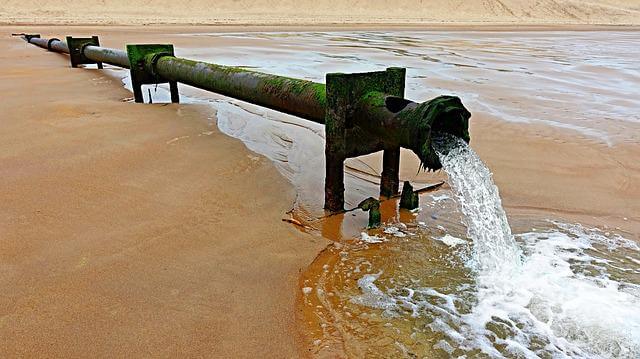What does detergent and mayonnaise have in common? Surfactants. The versatile chemical substance has a global market size of USD 45.7 billion in 2021. Of this lot, the home care detergent segment holds the largest market share.
- What is Surfactant?
- How does Surfactant Work?
- Types of Surfactants Based on Chemical Structure
- Surfactants Classifications Based on Raw Materials
- Plant based Detergent/Surfactants
- Can all Fat be Processed into Surfactants? Yes and No
- Petroleum based Detergent/Surfactants
- What is the most common Surfactant in a Detergent?
- What are the Other Applications of Surfactants?
- Issues with Surfactants: Is Surfactant Safe for the Environment?
- Biodegradable Surfactants: Is it Enough?
- Why We Should Care About the Environment? Are We Eating Detergents?
- Want Your Own Plant based Detergent? We can help!
What is Surfactant?
Detergent has many compounds to clean your clothes, one of which is surfactant. Surfactant is useful in removing dirt from clothes.

This substance helps separating dirt and oil from your clothes by mixing them with water to be washed away. The term surfactant comes from the word surface active agent.
How does Surfactant Work?
Washing clothes with only water is futile because oil and dirt cannot mix with water easily without aid. This is where surfactants are needed.

To understand how surfactant works, imagine water and oil in the same container. They do not mix without intervention, which is surfactant. Surfactants work by removing the interface between water and oils or dirt. To do this, surfactants utilise its hydrophobic (anti-water) tail and hydrophilic (water-seeking) head. Simply put, its head will be attracted to water, while its tail will avoid water and collect oils and dirt.

When detergent is added to water during cleaning process, surfactants’ tails will trap dirt and oil. These surfactants with form micelles, little spheres entrapping oil and dirt inside it. Now, the entrapped dirt can be washed away.

Types of Surfactant Based on Chemical Structure
There are four types of surfactants based on the polarity of its heads:
- Nonionic: the head has no charge
- Cationic: the head has positive charge
- Anionic: the head has negative charge
- Zwitterionic: the head contains both positive and negative charge

The most commonly used surfactants are anionic and nonionic surfactants. Anionic surfactants are widely used in detergents and shampoos. Nonionic surfactants are also used in household cleaners. It has great solubility and produce a low amount of foam.
Meanwhile, both cationic and zwitterionic surfactants are more for specialised use and more expensive to produce.

Cationic surfactants are most frequently used as fabric softeners, corrosion inhibitors, particle dispersants, and emulsifiers (e.g. for asphalt). It can be used together with nonionic surfactants, but not with anionic surfactants.
Lastly, Zwitterionic surfactants are widely used in cosmetics, protein purification, protein separation, and protein solubilization. For example, contact lens solution.

Surfactants Classifications Based on Raw Materials
Surfactants are mostly synthesized from petroleum or plant. Hence the name petroleum based and plant based surfactant, respectively. In addition, recently there is a rising development of biosurfactants, high-priced surfactants synthesized by microbes.

Both the raw materials and the processing procedures are varied extensively, contributing to the wide price range of surfactants. Plant based surfactants are generally more expensive than petroleum based surfactants.
Plant based Detergent/Surfactant
Detergent and soaps can be made from plant based oil such as coconut oil, palm oil, almond oil, avocado oil, castor oil, and many more.

These oils contain fat or triglycerides. The fat can be processed into surfactants through saponification or hydrolysis process. The result is plant based surfactant, which will be processed into plant based detergent.
Can all Fat be Processed into Surfactants? Yes and No
If you are referring to animal fat, then the answer is yes. Animal fat can also be processed into surfactants. Even several types of wood oil can also be processed into surfactants.

In 3000 BC, the Sumerians used ancient soaps made of burnt animal fat and ashes to clean themselves. Animal fat-based soaps are still in sale today, marketed as hypoallergenic soaps. Of course, these products are not labelled plant based detergents.

If you are referring to other triglycerides or fatty acid chain, then the answer is no. Some type of fats irritates skin and smells foul, therefore not considered ideal materials for plant based surfactant.
These type of fats are fatty acid esters with six carbons or less (mostly short-chain fatty acid). As an illustration, coconut oil contains fatty acid C6 to C21, while avocado oil contains mostly C16 to C18:3.
Petroleum based Detergent/Surfactants

Petroleum based surfactants are the lowest price surfactants. Currently, about 50% of surfactants are petroleum derived.
What is the most common Surfactant in a Detergent?
Alkyl-benzene sulfonate were the most common surfactant in powder detergent products, until it was replaced later by linear alkylbenzene sulfonates (LAS) in many countries.

Other common surfactants in home care and personal care industries are Sodium Lauryl Sulfate (SLS) and Sodium Laureth Sulfate (SLES). These surfactants are anionic surfactants, about 50% of world production, and mostly petroleum based.
How does Surfactant Work:What are the Other Applications of Surfactants?
As you may have known, surfactants are not only found in detergent. They are also used in soaps, fabric softener, and personal care industries (hair conditioners, shampoos, toothpaste, and cosmetics). Without surfactants, toothpaste would not foam and rinse off properly after brushing.

Other applications of surfactants include food industry, plastic, textiles, adhesives, firefighting chemicals, and water treatment. It can also clean oil spill in the ocean (as dispersants). Moreover, surfactant can increase crude oil production by recovering up to 40% of residual oil in reservoirs (enhanced oil recovery).

According to Precedence Research, the market size will worth around USD 81.7 billion by 2030. While these mostly petroleum based surfactants work perfectly fine, there are some environmental issues relating to them.
How does Surfactant Work: Is Surfactant Safe for the Environment?
As alkyl-benzene sulfonates are widely used around the globe, it resulted in a sizeable waste discharge into the environment. Then, water pollution occurred. Alkyl-benzene sulfonates causes foam in lakes, rivers, and sea. It also contaminates drinking water.

Here is where biodegradability issue takes place. The fact that surfactant waste is harmful to the environment, especially aquatic life, fuels initiatives to develop biodegradable surfactants.
Biodegradable Surfactants: Is it Enough?
Biodegradable means a substance must be able to be broken down into non-toxic products. To be considered 100% biodegradable by Environmental Protection Agency (EPA), surfactants must degrade in water and create neither carcinogens nor mutagens.

This is why the aforementioned alkyl-benzene sulfonate, the most common surfactant used in powder detergent, is eventually replaced by LAS. LAS is considerably more biodegradable than its predecessor, although not 100%.
So, using biodegradable surfactant should do the trick, shouldn’t it? Apparently, it is not enough.
Despite considered biodegradable, exceedingly large discharge of LAS into the environment still causes sizeable harm to body of water. Studies shown that LAS can cause toxic damage to aquatic plants. It intoxicates and kills fishes.

Surfactant biodegradability issue also extends beyond the use of detergents. When Deepwater Horizon oil spill occurred in 2010, almost three million litres of chemical dispersants (made of surfactants) Corexit 9500 were applied, both at the surface and in deep water. Dispersant works by breaking oil down into tiny droplets, hoping to help microbes degrade the oil further, thus preserving marine life.

Initially, the dispersants were intended to mitigate environmental damage caused by the spill. However, studies offer conflicting conclusions regarding the positive impact of the dispersants. Despite considered relatively biodegradable and was approved by EPA, Corexit 9500 is ultimately proven toxic to marine life.

In conclusion, biodegradable surfactant is much better than non-biodegradable ones. However, toxicity issue is still prevalent, especially when waste is discharge into body of water. Therefore, plant based surfactants are considered the better solution.
Why We Should Care About Plant based Detergent? Are We Eating Detergents?

Because surfactant waste is not just ingested by marine life. We, in turn, consume fishes, oysters, and seaweeds that have been contaminated by detergent surfactants. We may be drinking them too. Therefore, we must work together for a better environment in our future.
Now, increasing number of organizations are aware of the environmental impact of petroleum-based surfactants. According to Fortune Business Insights, the global natural surfactants market size was USD 18.16 billion in 2020, and is expected to increase further.
Want Your Own Plant based Detergent? We can help!

Whether your business is ocean-bound (e.g. oil rig, cruise ships, commercial shipment), home care, or you want to take a step further for the sake of the environment, count us in! We can help you by formulating an eco-friendly, plant based detergents and other cleaning solution that is suitable for your needs. Drop us an email at contactus@cleandetergent.com and let’s create a better future.